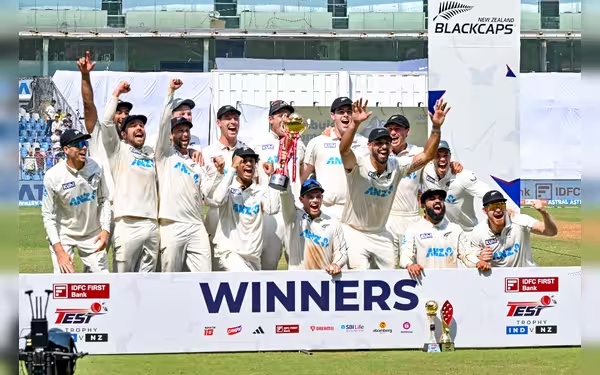Saturday, November 16, 2024 07:41 PM
Defining Excellence: The All-Rounder in Cricket
- All-rounders excel in both batting and bowling.
- Statistical criteria often overlook true impact.
- Charisma and leadership are vital for success.
 Image Credits: arabnewspk
Image Credits: arabnewspkExplore the defining traits of an excellent all-rounder in cricket, beyond mere statistics.
Cricket, often referred to as a gentleman's game, has produced some of the most remarkable talents in sports history. Among these talents, all-rounders hold a special place. An all-rounder is a player who excels in both batting and bowling, making them invaluable to their team. The debate surrounding what truly defines an excellent all-rounder has been ongoing, especially in the context of recent discussions about triple centurions and hat-trick takers in Test cricket.
To understand what makes an all-rounder exceptional, we must first look at the criteria used to evaluate their performance. Traditionally, an all-rounder is someone who could be selected as either a standalone batter or bowler. This means they must possess skills that are good enough to earn them a spot in the team based solely on their batting or bowling abilities. Another common definition suggests that an all-rounder should have a batting average that exceeds their bowling average. However, this definition often requires additional qualifications, such as a minimum number of wickets taken or Test matches played.
For instance, the International Cricket Council (ICC) ranks players based on their current performance, but there is no universally accepted standard for what constitutes an all-rounder. Analysts often look for players who have scored at least 3,000 runs and taken 400 wickets. This criterion highlights six notable players: Richard Hadlee, Kapil Dev, Stuart Broad, Shaun Pollock, Shane Warne, and Ravichandran Ashwin. If we relax the criteria to 3,000 runs and 300 wickets, we can add four more names to the list: Ian Botham, Daniel Vettori, Imran Khan, and Ravindra Jadeja.
However, it is essential to note that many of these players are primarily recognized for their bowling prowess. For example, while Hadlee boasts the best bowling average at 22.21, Imran Khan follows closely with 22.81. Yet, Khan's batting average of 37.69 surpasses Hadlee's 27.16, indicating that he could be classified as a true all-rounder. The question arises: is a batting average in the mid-to-late thirties sufficient to secure a place in a Test team? Historical examples suggest that it can be. Players like Derek Randall and Mike Brearley were selected for their unique contributions to the team, despite their batting averages being below the ideal threshold.
As we delve deeper into the statistics, we find that a batting average between 30 and 35 is contentious. Botham, Pollock, and Dev all fall within this range, yet their impact on the game cannot be understated. Botham, for instance, was not only a prolific all-rounder but also a charismatic leader on the field. If we accept a batting average of 30, we must also consider what constitutes a successful bowling average. Historically, bowlers with averages below 30 have been deemed successful, with many of the top bowlers achieving this mark.
However, the debate does not end there. When we examine players like Jacques Kallis and Gary Sobers, we see that they possess extraordinary records but do not meet all the statistical criteria. Kallis scored over 13,000 runs and took 292 wickets, while Sobers scored over 8,000 runs and took 235 wickets. Their contributions to the game are undeniable, yet they do not fit neatly into the all-rounder category based on strict statistics.
Defining an excellent all-rounder in cricket is a complex task that goes beyond mere numbers. While statistical criteria such as batting and bowling averages provide a framework for evaluation, they often fail to capture the true essence of an all-rounder’s impact on the game. Players like Ben Stokes, Andrew Flintoff, and Keith Miller have shown that charisma, leadership, and the ability to inspire teammates can be just as important as raw statistics. Ultimately, the best all-rounders are those who can adapt to the needs of their team and deliver when it matters most, making them invaluable assets in the world of cricket.













